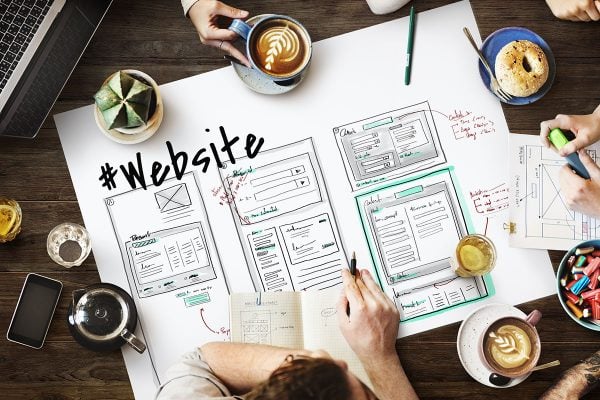When was the last time you looked at your website’s home page? I don’t mean clicked through on the way to checking your new stock’s displaying correctly: I mean, really looked at it, through the eyes of someone arriving there for the first time ever.
The homepage’s role is two-fold: firstly, to show visitors at a glance what your site is about, and secondly, to get them to move on, into your site, quickly. You have maybe a couple of seconds to convince a first-time visitor that your site’s what they’re looking for. So make it easy for them to find that, and get rid of everything else.
Here are twenty ideas, each of which can be done in a minute or less, to tidy up your home page.
Declutter
- Cut the hyperbole, and take in the welcome mat the UK’s best!, Europe’s biggest! Right. I saw someone recently claiming to be “the biggest online book shop in the UK”. They weren’t Jeff Bezos, so I didn’t believe them. Don’t make nonsensical claims just to fill up space. As for welcome to our website, do you need to say this? I don’t think so. You have crucial seconds to get your message across, so make all text meaningful.
- Cut out the homepage link If people are already on the home page, they don’t need a link to the home page: it’s confusing, and it’s clutter. Declutter.
- Get rid of the date If you have a news site, having the date visible is justifiable. If you have an ecommerce shop, it’s just clutter. Declutter.
- Get rid of hit counters Your buyers don’t care how many thousand other people hit your site, though they might have a good laugh if your hit counter is resolutely stuck in double figures. Hit counters, whether your own or built into your ecommerce software (OSCommerce has a particularly annoying version), just look amateur. At least make them invisible; better still, sign up for Google Analytics: it’s free.
- Get rid of credit card symbols Time was, you needed to put Visa and Mastercard symbols on the front of your website to show that you took online payments and people wouldn’t have to post you a cheque. Those days are gone, my friend; credit card symbols are just clutter. Declutter.
I just haven’t found what I’m looking for…
- Contact details visibility Make it easy for buyers and potential buyers to contact you. A phone number on the front page is great; if you can’t manage that, a prominant link to a ‘contact us’ form, email address or other details, gives your customers confidence you’ll be there for them.
- About us link Who are you? Where are you? What’s your VAT registration number? You have to give your customers all this information, so make it easy for them to find. If you don’t, you just look like you have something to hide.
- Link the shopping cart Make it easy for people to checkout. (Better still, show them what’s in their cart… though that might take more than a minute to organise.)
- Get your search box ‘above the fold’, that is, visible on the page without scrolling down. One of the first things many users do when they arrive on your site is to look for a search box: they want to go where *they* choose, not where your navigation wants to send them. Make it easy for them to search. And make that search box big enough too: usability expert Jakob Nielsen recommends a box at least 27 characters wide, to accomodate multiple-word searches.
- Link payment and shipping methods I want to pay with PayPal and I want to be able to select next day delivery: don’t make me wait until the end of the checkout process to find out if it’s possible. Make this information easy to find.
Textual healing
- Rationalise text formatting If you do a lot of home page tweaks over a period of time, it’s easy to end up with ten different fonts using seventeen different colours. Tidy this up: you should have no more than two or three of each. And pick your colours carefully: people have a tendency to ignore big red text.
- Consistent capitalisation Welcome to Widgets R Us, your One Stop Shop for Wonderful widgets. Our Widgets are the best in the World. We know you’ll love our wonderful Widgets No. If you’re capitalising your brand names, be consistent about it. Resist the temptation to capitalise everything else.
- Get rid of exclamation marks Hello! Welcome to our website!! We hope you’ll have a great time shopping here!!!! Unless you’re a 14 year old writing on Livejournal, get rid of the exclamation marks. They make you look like – well, a 14 year old.
- Edit your text for human readers You already thought about search engines, right? You’ve got keywords in there, lots of them… so does your home page look like a list of keywords? Make it meaningful for people too. also linkage
Really saying something
- Make the title meaningful One of the most important things you can do to help search engines find and index your site is to get the title of the home page right. Many ecommerce applications, however, will just spew out the “name” of your shop. Take another look at this, and get your crucial keywords in there in a way that search engines can recognise, but more importantly, that human beings will want to click on.
- Write a meaningful tagline Instead of beginning with the ubiquitous “welcome to our website”, write a one sentence tagline that expresses what your site is about, or what your company does. Any first-time visitor should be able to suss you out from this.
- Organise your shop categories by what your buyers might be looking for You know (or you ought to) how your buyers will want to browse: match your shop categories to that, not to how you organise your stock. I’ve seen a lot of sellers recently who categorise by manufacturer: this might be useful as an additional filter if you sell a lot of designer names, but – say – organising frilly knickers by whether they’re made by Ann Summers or Leg Avenue is not helpful to the buyer who just wants to browse your knickers. And check that the order in which your category list appears has some kind of logic to it: alphabetical is good, the order in which you created the categories is probably not.
- Sense-check You already spell-checked, right? Read your text again, or get someone else to do it for you: spell-checkers won’t spot missing words, or correctly-spelt howlers like the one I saw recently: “gift wear”.
- Make images meaningful Product images should never be just illustration. If it’s something you sell, make it clickable, and buyable. If it’s not something you sell, then replace it with a picture of something you do sell. Why waste space enticing potential customers with a luscious image of something you’re not selling?










15 Responses
All good stuff… most of which I am guilty of.. oops.
off to declutter …
knicker browsing now thats an interesting hobby
#2 depends on who is inside them doesn’t it? 😀
Good Post! Sue! It Was Wicked! 08.09.08 09.32am!
Lol just messing!
Some good points that I am sure we are all guilty of at some point, but then it’s all about learning and changing which we are doing all the time.
One point I would like to flag up is about the payment logo’s, I do think it is important for security to have on your home page logo’s for paypal or google checkout as it does put trust in your site, I remember hearing the ‘real customers’ at the catalyst this year say that would make them trust a site more and make them feel protected.
Stu
#3 by the sounds of it you would of liked to see my model in them (well mens knickers anyway) 😆
Excellent stuff Sue, I wonder how many site owners went straight to their front page after reading this to make some changes. 🙂
A tiny one that annoys me is people still displaying the “Switch” card logo, this card ceased to exist well over a year ago, but loads of sites still display it.
A good list.
I agree with #4 though, that credit card logos build trust. They don’t need to be at the top of the hp though…footer is fine. We also find lots of people enjoy reading our customer comments.
#5 Who, Moi!
😀
Very nicely written Sue.
In short, internet marketing depends largely on well written content taht speaks to the reader. Keep it simple and remember to write for your visitors not search engine bots. Use graphics effectively and simply and dont let it take away from the content. Well done.
I also like to tell website owners to put a contact form on their own website. It cant hurt and can only help. Especially if you are a lead generation website.
#7 Calm down dear.
#10
Oh. Spoilsport.
Are you home yet?
#11 Take off at 1600 your time, god knows how wife managed to pack my case, gonna have to buy another bag at the airport and carry my clothes in carrier bags till we get there.
Nice article BTW Biddy.
I disagree with the get rid of credit card symbols comment but otherwise great piece Sue… some sites really do make you cringe!
How many times have I worked on a design until I got it ‘just like I want it’, only to step back and think *it’s just too d#%@ cluttered*. Good points for any beginning designer to keep in mind. Otherwise you are constantly redesigning your site (like me….).
Edie, I don’t think there’s necessarily anything wrong with constantly redesigning: it’s one of the joys of web design as opposed to print, that you can change things so easily. And of course the flip side of that is, as you say, it’s easy to change things without looking at the bigger picture.